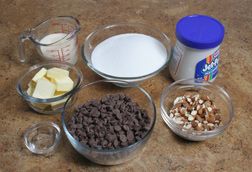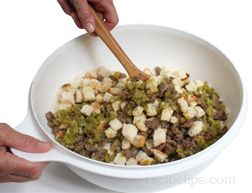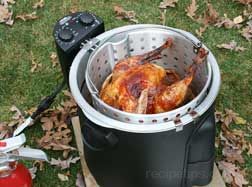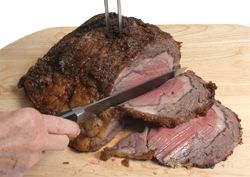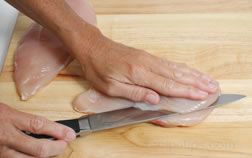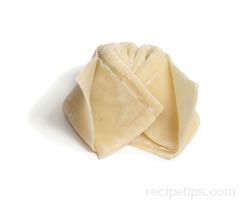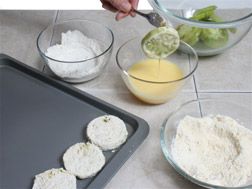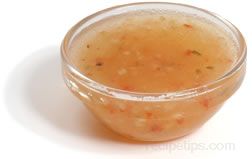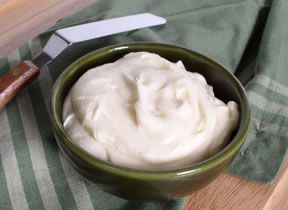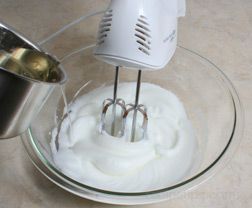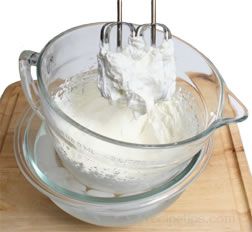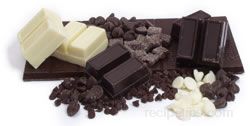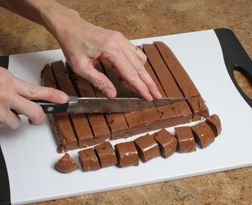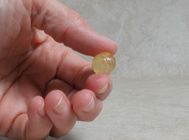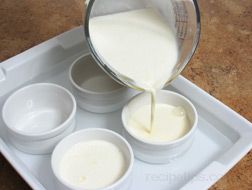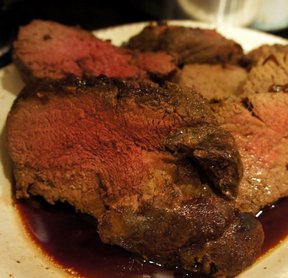|
There are many ingredients that have special functions in the baking and cooking process. Some functions are critical to the success of the finished product. Some of these ingredients can be substituted with other ingredients and produce the same outcome but many times substitutions will have some affect on the end product. See Food Substitutions for a list of substitutions that can be used when the original ingredients are not available.
Dry Ingredients
|
Dry Ingredients |
| Food Item |
Ingredient Function |
| Baking Powder |
A combination of baking soda, an acid and a moisture absorber, which together form a leavening agent. Just the right amount of acid is added to the baking soda so that when the baking powder is added to moist ingredients, there is a reaction that releases carbon dioxide bubbles. This reaction is what makes the batter or dough rise. |
| Baking Soda |
An ingredient used as a leavening agent. When it is mixed with an acidic ingredient and then comes in contact with liquid ingredients, a chemical reaction occurs. The chemical reaction releases carbon dioxide gas and causes the rising action in dough or batter. Some of the acidic ingredients that cause the reaction with baking soda are vinegar, lemon juice, orange juice, buttermilk, sour milk, sour cream, honey, chocolate and molasses. The chemical reaction begins as soon as the liquid is added, so the dough or batter should be baked as soon as possible after it has been mixed. If too much time passes before baking, the gases can escape and the product will not rise properly when baked. |
| Bran |
Bran is the outer layer of a kernel of grain. Bran is added to cereals and baked goods to increase the nutritional value and to add fiber. |
Bread-
crumbs |
Breadcrumbs are used to add texture and body to foods. They are added in with other ingredients or they can be used as a coating for meats, fish and vegetables. Breadcrumbs are used fresh or dried, and are used in different degrees of coarseness. Fresh breadcrumbs are handmade. Dried breadcrumbs can be made by hand but are also sold in food stores already dried and prepackaged. |
| Brown Sugar |
Granulated sugar that has molasses syrup added to it. The molasses syrup softens the texture of the sugar. Brown sugar is available in a light and dark variety. The darker has a more intense flavor. Use light brown sugar unless dark brown is specifically specified in the recipe. |
| Canning & Pickling Salt |
A fine-grained salt that does not contain any additives, which prevents the brine from becoming cloudy when canning and pickling food. It is used when canning and pickling vegetables and meats. It can also be used in the same manner as table salt but it may start to clump when exposed to excessive humidity. |
| Cocoa Powder |
An unsweetened powder made from the leftover chocolate liquor that has had the cocoa butter removed. The chocolate liquor is made from cacao beans and about 75% of it is extracted as cocoa butter and the remainder is dried and ground into cocoa powder. Cocoa powder is used to add chocolate flavoring to baked goods. |
Corn
Meal/Flour |
Made from ground dried corn. It is available coarse, medium or fine ground. Corn flour is ground finer than fine ground corn meal. Corn meal or flour will not form gluten so products made from them have a more coarse, dense texture than products made from some of the other flours. Corn meal and corn flour provide a corn flavor to products it is used in. |
| Cornstarch |
A thickening agent used in sauces, gravies, soups and desserts. It is finely ground from the heart of the corn kernel and has twice the thickening power of flour. |
| Cream of Tartar |
A white powder made from the acid deposits that form on the inside of the wine barrels during wine making. It is added to egg whites to give them more volume and stability. It also helps to stop sugar syrups from crystallizing and makes creamier frostings and candies when it is one of their ingredients. This acidic powder is also added to baking soda to create commercial baking powder. |
| Flour |
Generally, flour is the ingredient that gives baked goods their form and structure. When the flour is mixed with water, the proteins in flour interact with each other to form gluten. Gluten is what gives the dough its elasticity and the ability to stretch as the leavening agent produces the carbon dioxide gases that cause the dough to rise.
Different types of wheat flour contain different amounts of proteins for forming gluten. Soft wheat have a lower protein content than hard wheat. A flour with higher protein content is more desirable for yeast breads, whereas lower protein content is better for cakes, pastries, and quick breads to produce a more tender texture. |
Flour -
All-Purpose |
All-purpose flour is a multipurpose flour made from hard and soft wheat. It can be used for all baking purposes. It is available bleached and unbleached. |
Flour -
Arrowroot |
Arrowroot flour is a fine powder ground from the arrowroot plant. It does not have any flavor and its texture is similar to cornstarch. It is used as a thickener for sauces, gravies, puddings and dessert fillings. Arrowroot flour has approximately 50% more thickening power than flour. |
| Flour - Bread |
Bread flour is a hard wheat flour that is higher in gluten forming protein. It is used with yeast breads because the higher gluten content produces bread that is lighter, has more volume and is less crumbly. |
| Flour - Cake |
Cake flour is a soft-wheat flour with a fine-texture and a high starch content. It contains a lower level of protein than bread flour. When mixed with moisture, the protein in flour turns to gluten that gives the baked goods strength and structure. Pastries and cakes need only a limited amount of gluten. Since the pastry flour contains less protein it creates tender pastries and cakes. Cake flour is also referred to as pastry flour. |
| Flour - Oat |
Oat flour is ground from rolled oats. It provides a nutlike flavor and has a high protein content. Oat flour does not form gluten like the wheat flour, so it must be used in combination with a wheat flour so that the bread will rise. When using oat flour, about 1/3 of the flour can be oat flour and 2/3 should be wheat flour. |
| Flour - Pastry |
Pastry flour is a soft-wheat flour with a fine-texture and a high starch content. It contains a lower level of protein than bread flour. When mixed with moisture, the protein in flour turns to gluten that gives the baked goods strength and structure. Pastries and cakes need only a limited amount of gluten. Since the pastry flour contains less protein it creates tender pastries and cakes. The higher level of protein found in bread flour is required to create the structure of the bread crumb. Pastry flour is also referred to as cake flour. |
| Flour - Potato Starch |
Potato starch flour is a non-gluten forming flour that is ground from dried, cooked potatoes. It is a fine textured flour that has a mild potato flavor. Potato starch flour must be used in combination with a gluten forming flour, such as a all-purpose flour. |
| Flour - Rice |
Rice flour is a flour made from finely ground long or short grain rice. It is used as a thickening agent to thicken puddings, desserts, and sauces. It is also used to make noodles. It does not form gluten, so it can be substituted for wheat flour in some recipes to be used by people that do not tolerate gluten. |
| Flour - Rye |
Rye flour is ground from grains of rye grass and has a slightly sweet-sour flavor. It does not contain enough protein to develop the gluten necessary for the bread to rise sufficiently, so it must be combined with wheat flour. Rye flour produces a denser and darker loaf of bread and is available in light, medium and dark varieties. The darker the flour the darker the loaf of bread will be. When using light rye flour in combination with wheat flour, you can use about 40% rye flour. When using the medium or dark rye flour, the amount of rye flour must be decreased. |
Flour -
Self-rising |
Self-rising flour is an all-purpose flour into which baking powder (a leavening agent) and salt have been added. When used in a recipe in place of all-purpose flour, the baking powder and salt are omitted from the other ingredients. |
| Flour - Semolina |
Semolina flour is ground from hard durum winter wheat. Semolina flour produces stronger dough because it contains a high level of gluten, which adds elasticity to the dough. Dough made from semolina flour is too hard to handle when rolling out by hand because of its stickiness but when mixed with unbleached white flour it produces a strong dough that is easier to handle. Semolina flour is used when making pasta and some breads. |
| Flour - Soy |
Soy flour is flour ground from hulled and roasted soybeans. Soy flour cannot form gluten and contains no starch, but it is very high in protein. It is generally used to increase the protein in baked goods but you must be cautious as to how much you use because it will affect the taste and cause increased browning if too much is used. The flour is produced as natural (defatted), which has the oils removed, or full-fat, which retains the soybean oils. |
Flour -
Triticale |
Triticale flour is ground from the man-made grain triticale. Triticale is a high protein man-made grain produced by crossbreeding wheat and rye. The man-made grain was produce in effort to duplicate the protein and bread-making qualities of wheat and the durability and high lysine content of rye. Triticale flour provides a nutty flavor similar to wheat and rye, and generally contains more protein than wheat flour. Because of its durability, it handles better than rye flour but not as well as wheat flour. It can be substituted in equal portions for recipes requiring either wheat or rye. Yeast dough made with triticale flour should be fermented for less time than dough made with wheat flour. |
Flour -
Whole Wheat |
Whole wheat four is ground from the full wheat kernel, including the bran, germ, and the endosperm. Whole wheat flour is brownish in color and is much more nutritious than refined white flour. It is often added to white flour to improve the nutrition of baked goods. Whole wheat flour is available in fine, medium and coarse ground. As the coarseness of the flour increases, the coarseness of the baked good's texture increases. Due to the higher unsaturated oil content in whole wheat flour, it has a shorter shelf life. Food products made with whole wheat flour have a higher potential of becoming rancid if kept for long periods of time. The life of the food product can be extended if stored in the refrigerator. If substituting whole wheat flour for part of the white flour when making yeast and quick breads, each cup of white flour that you replace should be replace by 1 cup plus 2 tablespoons of whole wheat flour. Bread made with whole wheat flour will produce a smaller, denser loaf. |
| Granulated Sugar |
Fine or extra-fine sugar crystals made from refined beet or cane sugar. It serves several purpose in baking. It provides sweetness, adds tenderness, and helps in the browning of baked goods. When added to yeast dough, it helps the yeast begin producing the gas for the dough to rise and helps to retain the moisture in the bread. It is also referred to as white sugar. |
| Herbs |
Herbs are plants that have fragrant leaves and stems that are used to season foods. Herbs can be used fresh or dried, but the quantity you should use in a recipe may vary greatly depending on which type is used. Be sure to read the recipe carefully to see if different quantities are indicated for dried versus fresh. There are many different types of herbs, but some that are commonly available are: angelica, basil, bay leaves, burnet, chives, chervil, cilantro/coriander, dill, fennel, garlic, hyssop, lavender, lemon balm, lemon grass, lemon verbena, marjoram, mint, oregano, parsley, pepper, rosemary, sage, savory, sorrel, tarragon, thyme, watercress, and wintergreen. |
| Kosher Salt |
A coarse grained salt that does not contain any additives. It is preferred for its texture and flavor. Because it is coarser grained, it takes up more space when measuring. When using it in place of regular salt, you will need to increase the amount called for in the recipe. Add an additional 1/8 tsp. of kosher salt when the recipe calls for 1 tsp. of salt. |
| Oatmeal |
A cereal ground from hulled and cleaned oats. It can be cooked to eat as a breakfast cereal or it can be used as an ingredient for baking. Oatmeal is available as old fashioned rolled oats, which are larger flakes that take approximately 15 minutes to cook or as quick-cooking oats, which are smaller cut flakes that take approximately 5 minutes to cook. Both types can be interchanged when baking. It is also available as an instant oatmeal, which is oatmeal that is made up of very small cut flakes that are precooked and dried. They require minimal cooking but are not recommended for use in baking. |
| Pearl Sugar |
Large, smoothly polished crystals of sugar, which are used for decorating purposes. |
| Pepper |
A savory spice that has been ground from peppercorns. Pepper is available as whole peppercorns that can be freshly ground and can also be purchased cracked or in ground form. |
| Powdered Sugar |
Granulated sugar that has been finely ground into a powder. It is used to make creamy frostings and to add a decorative coating to baked goods. Cornstarch is sometimes added to the powdered sugar to prevent it from absorbing moisture and forming clumps. Also referred to as confectioner's sugar. |
| Salt |
Salt is a seasoning that sharpens the flavor of other ingredients. If the amount of salt called for in a receipe is reduced, other seasonings should be increased to compensate for the flavor loss. Salt will also enhance the sweetness of a food. The salt in yeast dough slows the fermentation of the yeast, so reducing the amount of salt used will affect the finished product. The loaves of bread that will rise to quickly, which will affect the flavor and shape of the loaves. |
| Salt Substitute |
Generally a salt substitute consists of potassium chloride. It is bitter in taste but provides for a lower sodium intake. It should not be used in baking. There are also salt substitute mixtures available which consists of a mix of potassium chloride and sodium chloride. The mixture provides for a lower sodium intake but its taste is similar to regular salt. |
| Sea Salt |
Sea salt is produced through the evaporation of sea water. It is available in fine and coarse grained crystals. It is preferred for its fresh, distinctive taste, which will vary depending on the location it is from. |
| Spices |
Spices are taken from a variety of plants. Spices are found in the stems, roots, buds, bark, seeds, and fruit of plants. They have strong aromas and strong flavors that are used to add flavor to baked and cooked foods. Most spices are available in both whole and ground form. Ground spices will lose their potency faster than whole spices. Some of the spices you will find are allspice, aniseeds, caraway, cayenne pepper, chili powder, cinnamon, cloves, coriander seeds, cumin, curry powder, fennel seeds, ginger, juniper berries, mace, nutmeg, paprika, pepper, peppercorns, saffron, Sichuan pepper, star anise, sumac, and turmeric. |
| Superfine Sugar |
Granulated sugar that has been ground into extra-fine granules. Superfine sugar melts easily in liquid and works well in most baking recipes. |
| Table Salt |
A fine-grained salt that contains additives that prevent caking, which allows the salt to flow freely. It is also available with iodine added. Table salt is used as an "at the table" seasoning that is added to food when it is eaten at a meal but is also used as an ingredient when baking and cooking. It should not be used in canning and pickling because the additives in it can cause the water to turn cloudy and pickles to darken in color. |
| Unflavored Gelatin |
Unflavored gelatin is made from the collagen protein found in the bone, skin, and cartilage of animals. It is added to sweet and savory foods to cause the liquid in the dishes to jell, which thickens or gives shape to the dish. One tablespoon of gelatin is generally enough to jell two cups of liquid. |
| Wheat Germ |
Refers to the embryo of the wheat kernel, which is removed for the production of refined white flour, but remains as part of whole-wheat flour. The wheat germ is a good source of protein, vitamins, and minerals. It is used to add fiber and flavor, and can be substituted for up to 1/3 of the flour called for in a recipe. |
| Yeast |
Tiny microorganisms that grow and multiply when activated by the addition of warm water. As the microorganisms increase in size and number, they give off carbon dioxide, which causes the dough to rise and produce a light and airy loaf of bread. The addition or removal of other ingredients, such as sugar and salt, affect the action of the yeast, and if less yeast is used than called for, it will increase the amount of time it takes the dough to reach the proper volume. There are three types of yeast available, which include active dry yeast sold in granule form; compressed fresh yeast sold in cake form, which is found in the refrigerator section of a food store; and quick-rising yeast, which decreases the rising time by approximately 1/3 in comparison to active dry yeast. |
Solid Ingredients
|
Solid Ingredients |
| Food Item |
Ingredient Function |
| Almond Paste |
A paste made from blanched almonds, sugar and glycerine. The paste is used as a flavoring agent for pastries. Almond extract is sometimes added to the paste to bring out the almond flavor. The paste is also used for decorating baked goods. Almond paste is similar to marzipan but they are not interchangeable in recipes. |
| Baking or Bitter Chocolate |
Unsweetened chocolate that contains no other ingredients other than chocolate liqueur and 50 to 58% cocoa butter. Do not substitute any of the sweetened chocolates in a recipe calling for unsweetened chocolate. |
| Caramel |
Sugar that has been slowly heated until it melts and becomes slightly burned. Once the sugar has melted, it takes on varying degrees of color and develops a distinct flavor. If it is cooked too long it will become bitter and quite dark in color. It is used in candies, desserts and savory dishes to add color and flavor. |
| Caramel Candies |
Candies made form butter, sugar and cream. They are generally sold as small square candies that are individually wrapped. These squares are melted and used as a filling or topping for desserts or baked goods. They are also melted and used to coat apples to make caramel apples. |
| Chocolate |
Cocoa beans are ground and then processed to separate the cocoa butter from the chocolate liqueur. The chocolate liqueur is then further processed and mix with other ingredients to create different varieties of chocolate. Some of the different varieties are dark chocolate, milk chocolate, white chocolate, unsweetened, bittersweet, and semi-sweet chocolate. |
| Chocolate Chips |
Chocolate chips are small round droplets of chocolate. They are available in semisweet, bittersweet, milk, mint and white chocolate. You will also find them in mini, standard and large sizes. Chocolate chips will hold their shape when melted unless they are stirred together. They are popular to use in cookies, bars, muffins, and quick breads because when heated they will hold their shape. They add texture and bursts of flavor without being overbearing. |
| Cream Cheese |
A smooth white cheese that is made from cream and milk. Cream cheese is a fresh cheese so it does not keep for a long period of time. It has a sweet tangy flavor, and is available in several varieties: regular, which contains about 33% milkfat; light, which is softer and contains less calories and fat than regular; nonfat, which is made from skim milk and contains no fat; and whipped, which is regular cream cheese that has been whipped to make it fluffy and easier to spread. It is also available in several flavors. Cream cheese is used as a spread but is also used to make dips, desserts and frostings. |
| Dark Chocolate |
Dark chocolate includes sweet, semisweet and bittersweet chocolate. They are made up of chocolate liqueur, sugar and vanilla. Bittersweet contains more chocolate liqueur than sweet and semisweet chocolate. Generally the different varieties can be interchanged in recipes with little affect on the finished product. |
| Flavored Chips |
Baking chips that are shaped the same as chocolate chips but are different flavors. They are available in a variety of flavors such as vanilla, cherry, peanut butter, and butterscotch. They can be used in the same manner as chocolate chips to add texture and flavor to baked goods. |
| Fruits |
There are many different types of fruit that are used in baking and cooking, such as apples, bananas, oranges, lemons, limes, pineapple, strawberries, peaches, pears, apricots, and berries. They are used fresh, cooked, and dried. Check the recipe for the type of fruit needed and how it needs to be prepared. |
| Milk Chocolate |
Chocolate that is enriched with milk powder. It contains less chocolate liqueur and is lighter in color than any of the dark chocolates. |
| Raisins |
Raisins are dried grapes, which can be eaten plain or used as an ingredient in both sweet and savory dishes. They are available in two varieties, dark and golden. The dark raisin is dark in color, has a drier, more shriveled texture, and has a sweet flavor. The golden raisin is a light golden color, is more moist and plump, and has a sweet, tangy flavor. Raisins add flavor and texture to salads, baked goods, and cooked dishes. |
|
Sour Cream |
Sour cream is a dairy product produced from sweet pasteurized cream. It has a thick consistency and a flavor that is slightly tangy. It is fairly acidic, which activates the leavening action of baking soda. It is used as a topping and for making dips. It is also used as an ingredient in both sweet and savory dishes. Sour cream is also available in low-fat and nonfat varieties. |
| Vegetables |
There are many different types of vegetables that can be used when cooking, such as potatoes, beans, peas, carrots, corn, onions, broccoli, cauliflower, and many more. They are used fresh, cooked, and dried. Check the recipe for the type of vegetables needed and to see how they need to be prepared. Vegetables are used on their own to create a vegetable dish or with other ingredients to create a one-dish meal. |
| White Chocolate |
White chocolate is not actually a true chocolate because it does not contain any chocolate liqueur. It contains pure cocoa butter, sugar, milk solids, lecithin, and vanilla. It is can be eaten on its own or it can be used in cookies, cakes, bars, and desserts. It is also used as a coating on snacks, such as pretzels and nuts. |
Liquid Ingredients
|
Liquid Ingredients |
| Food Item |
Ingredient Function |
| Buttermilk |
Traditionally buttermilk was the liquid that was left after whole milk has been churned into butter, but today commercial buttermilk is produced by adding lactic-acid bacteria to low-fat or nonfat milk. Buttermilk has a thick consistency and adds a tangy flavor to baked goods, sauces, and dressings. It can be used in many recipes to replace yogurt and sour milk. Buttermilk is also available in powdered form. |
| Corn Syrup |
A thick, sweet syrup extracted from corn. It is available in a light and dark variety. The light syrup is clear in color and sweet but does not have much flavor. The dark syrup is brown in color and has a sweet molasses or caramel-like flavor. Corn syrup works well in frostings, candies and jams because it hinders crystallization. It produces a denser, chewier dough when used in baked goods. Corn syrup can also be used in place of honey or maple syrup but it is not as sweet so it may have a slight affect on the finished product. |
| Eggs |
Eggs can be cooked and eaten as a food themselves but they also serve several purposes as an ingredient. They give cooked dishes and baked goods structure. They also add flavor, color, liquid, protein, and fat. The egg yolks add to the tenderness and provide consistent flavor and texture to the product. Egg whites add volume to the recipe. Two egg whites can be substituted for one whole egg if concerned about cholesterol. Grade A large eggs are the best size to use for most recipes calling for eggs. |
| Evaporated Milk |
Whole, low-fat, or nonfat milk that has had approximately 60% of the water removed. It has been heat-treated to sterilize it in the can. This allows the milk to be stored at room temperature. Evaporated milk is used undiluted in sauces, soups and custards to give them a rich creamy texture. It is also used in baked goods and other dishes. Do not interchange with sweetened condensed milk, which is very sweet and sticky. Evaporated milk can also be reconstituted by adding water and it can then be added to recipes calling for milk. |
| Extracts |
Extracts are produced by extracting the oils from fruits, nuts, and plants and then dissolving the in an alcohol base. Extracts are used to add flavoring to baked goods, candies, desserts, sweet fillings, and frostings. There are imitation flavorings also available that are used in the same manner as extracts but to provide the best flavor to your foods use pure extracts. Some of the common extracts available are vanilla, almond, maple, anise, lemon, orange, and peppermint. |
| Food Coloring |
A coloring solution used to add color to foods. Food coloring is generally added to frostings or batters for decorating purposes but can also be added to other foods to enhance their color. Food coloring adds color but does not affect flavor. It is generally available in the primary colors and they can be mixed to create additional colors. Start with a small amount and add more to darken to the desired color. Food coloring is also available in a paste form. |
| Half & Half |
A commercially produced product that consists of half milk and half light cream. It is used on cereal, as a coffee creamer and as an ingredient in many recipes. |
| Heavy Cream |
A dairy product that has a butterfat content of at least 36%. It is also known as whipping cream and double cream. Heavy cream provides a rich, creamy texture to the foods it is added to. It is used in sweet and savory sauces, baked goods, desserts and dessert toppings. It is also used as an ingredient in cocktail drinks. |
| Honey |
Honey is the nectar from flowers and other plants that is collected by bees. Honey is used as a sweetener and has a distinctive flavor that is influenced by the type of flowers and plants that the nectar is taken from. A product containing honey is likely to be fairly moist because it contains fructose, which absorbs moisture from the air around it. When using honey in a recipe in place of sugar, use 3/4 cup plus 1 tablespoon of honey per cup of sugar being replace. The liquid in the recipe should also be decreased by 2 tablespoons to help offset the additional moisture that will be created by the honey. If too much honey is used in a recipe, excessive browning may occur. Honey is also used as a spread similar to jam or jelly. It is available in three basic forms — liquid honey (liquid containing none of the comb), chunk-style honey (liquid with pieces of the comb), and comb honey (a square or round piece of the honeycomb containing the honey inside). |
| Juices |
Juices are liquids extracted from food items that are used to make beverages and sauces. The fruit juices are also used as liquid ingredients in recipes for some baked goods. Fruit juices are acidic, so when combined with baking soda in a recipe, they cause the chemical reaction that results in the baking soda acting as a leavening agent. |
| Light Cream |
A dairy product containing 18 to 30% milkfat, also referred to as table cream. It is used in making soups, sauces, desserts and baked goods. When used in place of heavy cream, the foods texture will not be as creamy. Light cream will separate or curdle easier than heavy cream so when using in soups and sauces, use a lower heat, heat slowly, and do not let it boil. |
| Low-fat Milk |
Milk that has had most of the fat removed. It is available in varieties containing 1% or 2% milkfat. It can be used in recipes as a substitution for whole milk or fat-free milk. |
| Milk |
When called for in a recipe it is referring to cow's milk. It is available as whole milk, low-fat milk, and skim (fat-free) milk. Also available powdered and condensed. Most often they are interchangeable in a recipe. The milk adds nutrition and browning capabilities. When heating milk, heat slowly and watch carefully to prevent it from scorching. |
| Molasses |
A thick, strong flavored syrup, produced as a byproduct of sugar refining. Molasses is used as a sweetener but is not as sweet as sugar. It is available in three varieties: light, which is from the first boiling and the sweetest of the three; dark, which is from the second boiling and is a little less sweet but has a deeper flavor; and blackstrap, which is from the third boiling and is very dark in color with a bitter flavor. Blackstrap is rarely used in baking. Light and dark molasses are interchangeable in recipes, resulting in the finished product having a slightly deeper flavor when the dark molasses is used. |
|
Skim Milk |
A fat-free variety of milk that contains no more than .5% of milkfat. Skim milk can be interchanged with low-fat or whole milk in a recipe without a noticeable difference in the end product. Depending on the amount of milk called for in the recipe, you may notice slightly less flavor and richness when skim milk is substituted whole milk. |
| Soy Milk |
A milk substitute made from pressed, cooked soybeans. Plain soy milk can be used in place of cow's milk in puddings, sauces and soups. Using soy milk in place of cow's milk will affect the taste of the end product. You may want to start by only replacing half of the cow's milk with soy milk. In addition to plain soy milk, there are flavored varieties, and low-fat, fat-free, and fortified versions. Soy milk is high in protein, low in saturated fats, and cholesterol free. People who are lactose intolerant can use soy milk as a replacement for milk in some of their recipes. Soy milk has a tendency to curdle so you have to be careful when adding to acidic foods. |
| Sweetened Condensed Milk |
Whole milk that has had 60% of the water removed and then sugar added. The amount of sugar added makes up 40% of the sweetened condensed milk's volume. It is very sweet and sticky, and adds a richness to the foods it is added to. It is used to make candies, bars, pies, and puddings. Sweetened condensed milk turns a golden color and takes on a caramel like flavor when heated. It also thickens as it is heated. Sweetened condensed milk cannot be used as a substitution for other milk product. |
| Vanilla |
See "Extracts" above. |
| Vinegar |
An acidic solution resulting from allowing wine or an alcoholic liquid to ferment a second time. Vinegar adds a sour, pungent taste to the foods it is added to. It has a tendency to lose its pungency when heated so if you desire a stronger flavor from the vinegar when adding it to a heated dish, you should add it after the dish is removed from the heat. The two most common types of vinegar are apple cider vinegar, which has a tart fruity flavor and distilled white vinegar, which has a more pungent flavor that is too harsh for regular cooking. Apple cider vinegar is most often used in recipes for foods such as salads, dressings, sauces, marinades and condiments. The distilled white is used most often for pickling and cleaning purposes. Other varieties include balsamic vinegar, malt vinegar, wine vinegar, and rice vinegar. |
| Vinegar-Balsamic |
A vinegar made from sweet, white Trebbiano grapes. Traditional balsamic vinegar is aged for at least 12 years and is very expensive. Most commercially manufactured balsamic vinegar are aged for a shorter period of time. They are aged in stainless steel tanks for 6 months to a year and in wooden barrels for 2 to 12 years. It adds a sweet-sour taste to the foods it is added to and it has a dark color. It can be used for salad dressings, sauces, marinades and gravies. |
| Vinegar-Malt |
Malt vinegar is made from the fermentation of malt liquor. It has a natural caramel color but is sometimes distilled to make it clear. It has a strong distinctive taste and is popular to use for pickling and sprinkled on fish and chips. |
| Vinegar-Rice |
Vinegar made from fermented rice wine. It has a clean, mild flavor that is slightly sweet, which goes well with herbs, spices and fruits. Rice vinegar is light in color, which helps maintain the color of the ingredients it is added to. It can be sprinkled on salads, fruits, vegetables and stir fry dishes to give them a spark of flavor. It is popular in Japanese and Chinese dishes. |
| Vinegar-Wine |
Vinegar made from fermented red or white wine. Red wine vinegar is dark red in color and has a sharp flavor. White wine vinegar is clear or has a very light gold tint to it. It is acidic in flavor. They are used to add a spark of flavor to fruits, salad dressings, marinades, sauces, and glazes. |
Fats
|
Fat Ingredients |
| Food Item |
Ingredient Function |
| Butter |
The semi-solid product that is produce from churning cream. It is at least 80% milkfat and is available in salted or unsalted varieties. The unsalted variety is often used when cooking because it allows the cook to have more control over the seasoning. Butter creates flaky pastries, and it provides flavor, tenderness, crispness, and a golden-brown color to many foods. When used in cookies it will cause them to spread less than if margarine is used and will give the cookies a lighter texture and richer flavor. It is used when frying and sautéing food, as a spread for baked goods such as breads and rolls, and as a flavoring for cooked vegetables. When eaten, it does not leave a greasy feeling in your mouth because it melts at body temperature. It is an ingredient in hundreds of recipes including breads, pastries, cakes, entrees, and sauces. |
| Lard |
Lard is pork fat that has been rendered. In rendering, the fat is heated, causing the connective tissues to brown and turn crispy. They are then strained from the fat to purify the lard. Lard provides a slightly nutty flavor and because of its richness, it creates very tender, flaky pastries and pie crusts. It can be used in place of butter in baking recipes, but the amount should be reduced by approximately 25 percent. |
| Margarine |
Margarine is made from partially hydrogenated vegetable oil, water, milk solids, salt and generally coloring. It is similar to butter in appearance and texture. Its flavor is also similar to butter but is not as rich. In addition to regular margarine (containing 80% fat), it is available in several other varieties, such as reduced fat (containing 60% fat), low-fat (containing 40% or less fat), and fat-free (containing less than half a gram of fat). It can be used in most recipes in place of butter but there will be a slight loss of flavor. When used for making cookies, the margarine will have a tendency to spread more than butter, resulting in a more flattened cookie. For best results when substituting margarine, use regular margarine and not one of the reduced fat varieties. Margarine will create a softer dough but butter should be used when making pastries to provide the most flakiness. |
| Oil |
Oils are extracted from seeds and fruits such as corn, cottonseed, soybean, sesame, sunflower, safflower, olive, and avocado. Some oils are extracted from nuts such as peanut, walnut, almond, and hazelnut. Oils are used to fry and sauté foods, for making salad dressings, and as an ingredient in baking. Some of the common oils used for these purposes are vegetable oil, corn oil, canola oil, olive oil, sunflower oil, soybean oil, and peanut oil. Oil is used in recipes for breads, cakes, cookies and muffins. Oil can be used in place of butter or margarine in most recipes by using 7/8 cup of oil for each cup of butter or margarine that is called for. Substituting the oil will result in the finished product having a heavier texture. Because oil has a higher smoke point than butter or margarine, it works better for sautéing, frying, deep-frying and stir-frying. |
Reduced
Fat Substitutes |
There are a variety of alternate ingredients that can be used instead of oil or butter to reduce the fat content when cooking or baking. Substitute products exist with reduced fat and no fat and in different forms such as sprays, spreads and liquids. Fruit purees or applesauce can be used as oil substitutes for baking purposes. When using reduced fat or fat- free substitutes, be cautious as to when and how they are used. Some recipes require a certain amount of fat to be successful. Reduced fat substitutes work well as a spread on breads and rolls, or as a topping for potatoes, pasta or vegetables, but they do not work well as a cooking oil or as an ingredient for baking. |
| Shortening |
Shortening is vegetable oil that has been solidified by a process called hydrogenation. It remains a solid at room temperature and similar to lard, it creates a flakiness in pastries and pie crusts. In some recipes for baked goods, the shortening is creamed together with the sugar. Creaming them together traps air in the batter and creates a lighter finished product. Shortening has a high smoke point so it also works well for sautéing, frying, deep-frying and stir-frying. | |



